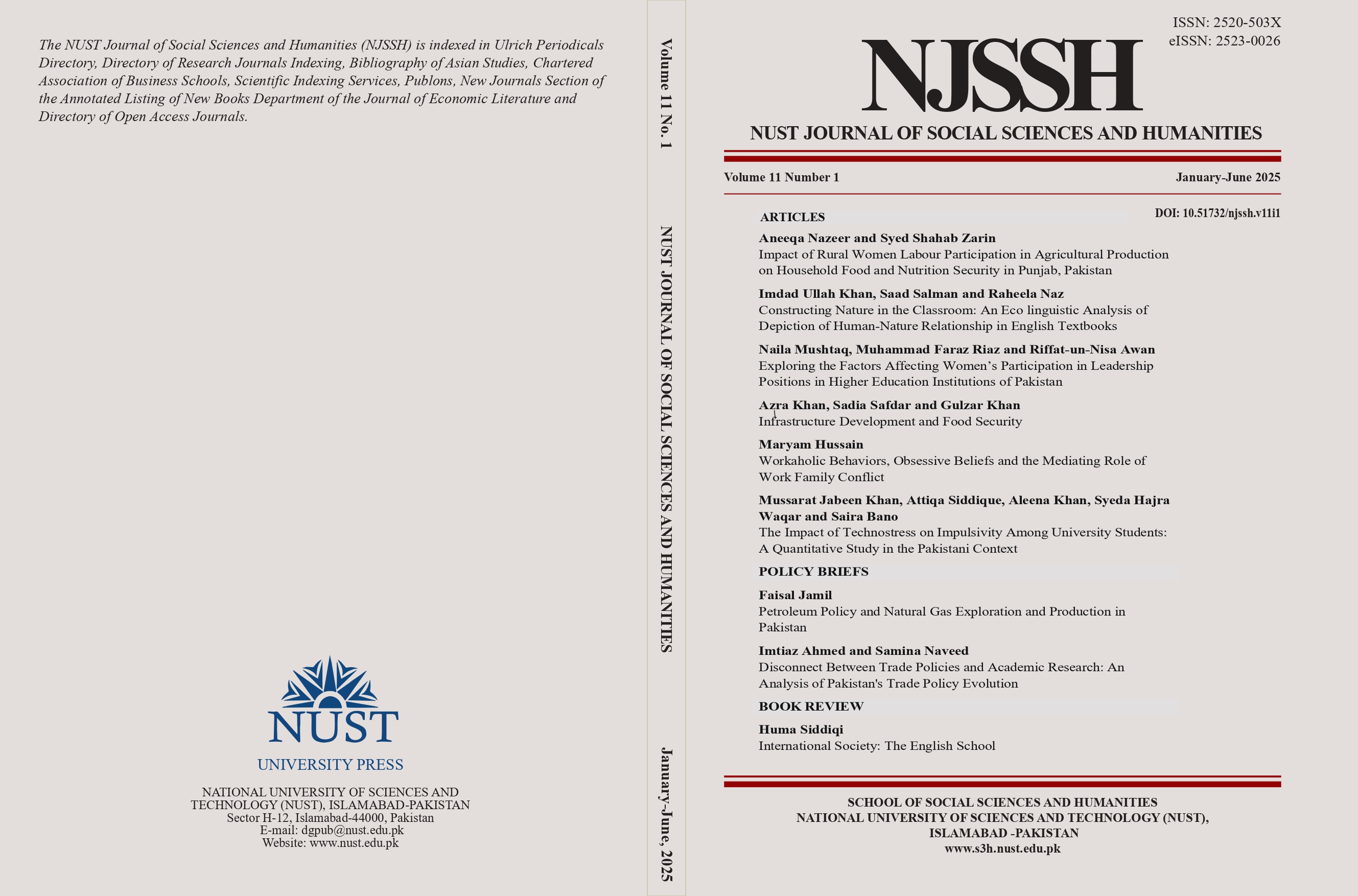Impact of Rural Women Labour Participation in Agricultural Production on Household Food and Nutrition Security in Punjab, Pakistan
DOI:
https://doi.org/10.51732/njssh.v11i1.241Keywords:
Women empowerment, time allocation, food and nutritional security, pulses, Punjab Article History: Submitted: March 4th, 2024, Accepted: May 20th, 2025, Published: June 30th, 2025Abstract
Rural women in Pakistan are involved in diverse household-related reproductive and agricultural-related
productive activities. The extant literature fails to capture women’s unpaid domestic and farm work. Therefore, this
study aims to evaluate the determinants of poor rural women’s time allocation to pulses production and the net impact
of women’s time allocation to pulses production on household food and nutrition security in Pakistan. The findings of
the descriptive analysis show that most of the women active in agricultural tasks were middle-aged, illiterate, and had
a healthy body (average body mass index) which enables them to perform physically demanding agricultural activities.
To correct the endogeneity of women’s time for agricultural tasks, we found two unique instruments: women’s body
mass index and household types of farming. A higher BMI is associated with reduced participation in agricultural
activities, possibly due to physical health limitations or reduced mobility. Body mass index decreases women’s
participation in agricultural activities, while household subsistence farming increases women’s involvement in
agricultural activities. The results of instrumental variable regression indicate that an hour increase in women’s
allocation of time to pulse production activities increases food consumption by 102 kcal per adult equivalent per day
and household dietary diversity by 6%. Moreover, the analysis reveals that the net impact of reproductive time such
as childcare, food preparation, and other household responsibilities on household food security is significantly greater
than the impact of productive (agricultural) time. This highlights the crucial role of unpaid care work in ensuring
household well-being. Moreover, the net impact of reproductive time on household food security was much more
significant than that of productive time. This study suggests that policymakers should compensate for women’s
increased agricultural workload by integrating health and nutrition interventions into rural development programs
thus linking the feminization of agriculture with broader social support systems.








